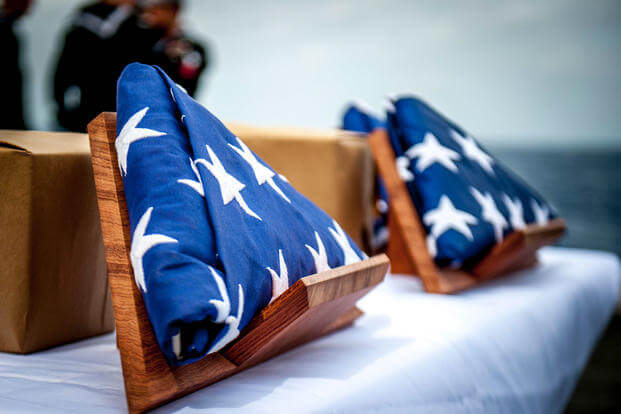"I am an American fighting in the forces which guard my country and our way of life. I am prepared to give my life in their defense." -- Article One of the Code of Conduct for members of the armed forces of the United States
Service members are prepared to die in the line of duty and, unfortunately, especially during times of war, too many do make that ultimate sacrifice.
It is a reality that the armed forces take very seriously -- both on a personal level, as those left behind mourn the loss of their brothers and sisters in arms, and on a professional level, as the Department of Defense strives to provide comfort to the bereaved families.
One of the most important military duties is to provide a death notification to the deceased's next of kin.
It is a duty that is carried out with the utmost respect and, like anything else in the military, it is overseen with official guidance.
Each branch has its own manual with specific procedures. The Marine Corps Casualty Assistance Program manual, for example, is 182 Trpages long -- no stone is left unturned.
But they all serve the same purpose: to provide guidance about casualty reporting; notification; mortuary affairs; military funeral honors; benefits; entitlements assistance; and all administrative requirements.
There are specific instructions for notifying the next of kin about injuries or even desertion, but this article will cover the procedure for death notifications. Each branch is different, but this is what they have in common:
1. Who.
Notification of death, duty status whereabouts unknown, or missing will be carried out in person to the primary next of kin and secondary next of kin. Notification officers will wear a formal uniform as stipulated by their branch guidelines. For the Marine Corps, it is the Service Alpha uniform; for the Air Force, it is the Service Dress, etc.
The notification team is composed of a field-grade officer of equal or higher grade than the member about whom they are making notification (for this article, we'll use the term "notification officer," but the duty title varies among branches) and at least one other person. If possible, the additional people should be a chaplain and medical personnel capable of delivering assistance to the next of kin. Notification should not be delayed in order to find the latter two, however.
A person with a close relationship to the deceased may be invited, as well as a public affairs representative if there are indications of a high level of media interest and the presence of media is likely.
2. When.
Death notification should be accomplished within eight hours of learning of the casualty incident, and between the hours of 0500-0000.
3. Where.
Respecting the next of kin's dignity and privacy is very important. If they are not home or cannot be found, the notification team may discreetly attempt to locate them or await their return. If the team is still unable to locate the next of kin, the notification officer will contact his branch personnel department for instruction.
Upon arrival at the home of the next of kin, the notification officer will ask for permission to enter. It is recommended that the next of kin be seated prior to delivering the news.
4. What.
Before the notification officer delivers the notification, they will verbally confirm the identity of the next of kin by asking for their full name. The notification officer will introduce himself and the team. The notification officer will then articulate -- as naturally as possible -- something close to the following:
"The commandant of the Marine Corps has entrusted me to express his deep regret that your (relationship), John (died/was killed in action) in (place of incident -- city/state or country) on (date). (State the circumstances.) The commandant extends his deepest sympathy to you and your family in your loss."
The Air Force delivers a notification letter with details (included with discretion), and the Marine Corps reminds its notification officers that the next of kin may need information repeated.
The notification team also verifies information about death gratuity, movement of the deceased, and other active-duty service members in the family (who must be properly notified as well). The notification officer will arrange a second visit, usually 24 hours later, to discuss mortuary affairs and funeral honors.
The team watches for signs of medical distress, and usually stays with the next of kin until another adult can accompany them.
5. Why.
In military speak, the purpose of this program is to provide "prompt and accurate reporting, dignified and humane notification, and efficient, thorough, and compassionate assistance to the next of kin and/or those designated to receive benefits/entitlements."
Adhering to guidelines can also help prevent confusion or, in a worst-case scenario, legal issues. Formal procedures also help protect family from scams that take advantage of deployed service members (yes -- that's a thing, and it's particularly atrocious).
But it's a much more sacred and human duty than that. In many ways, caring for those left behind is the truest way to honor the memory of a fallen hero.
More posts from We Are the Mighty:
How US military veterans are set to dominate the Paralympics
This athlete left the NFL to serve. Now he wants back in
6 deadly weapons from Fallout 4 that would probably be banned
We Are The Mighty (WATM) celebrates service with stories that inspire. WATM is made in Hollywood by veterans. It's military life presented like never before. Check it out at We Are the Mighty.














